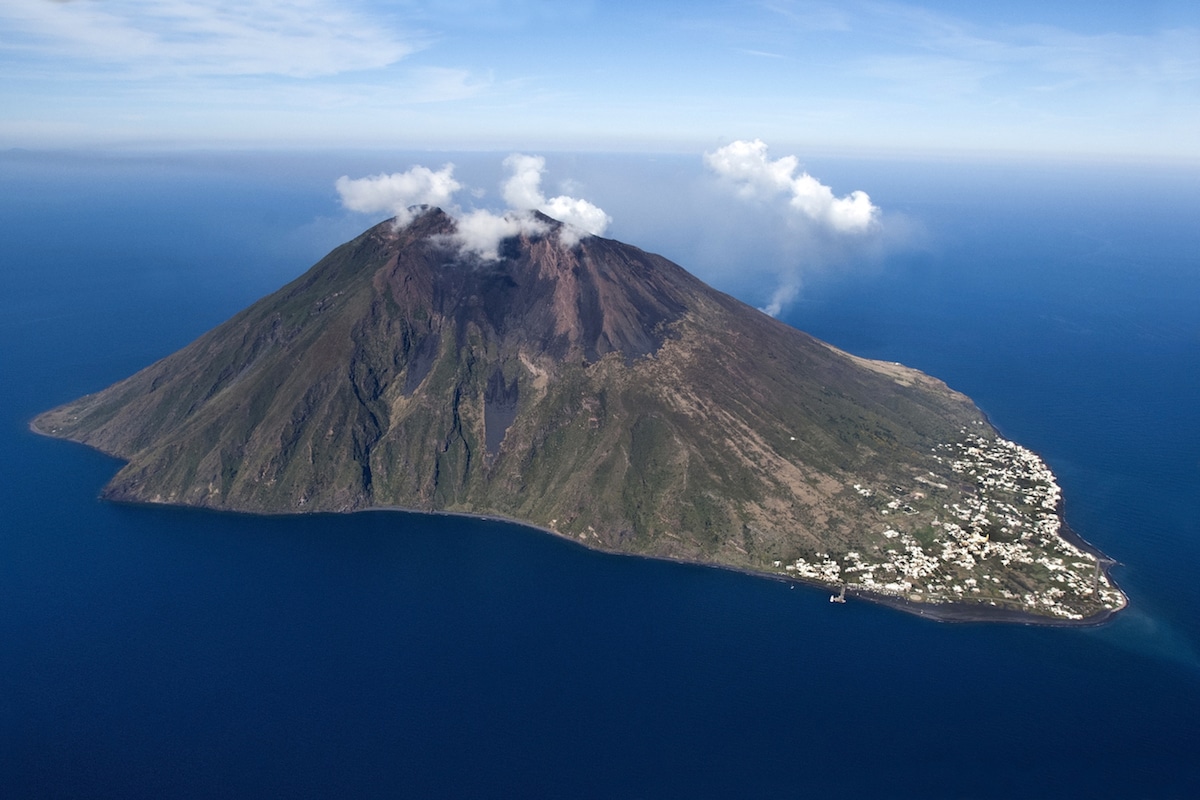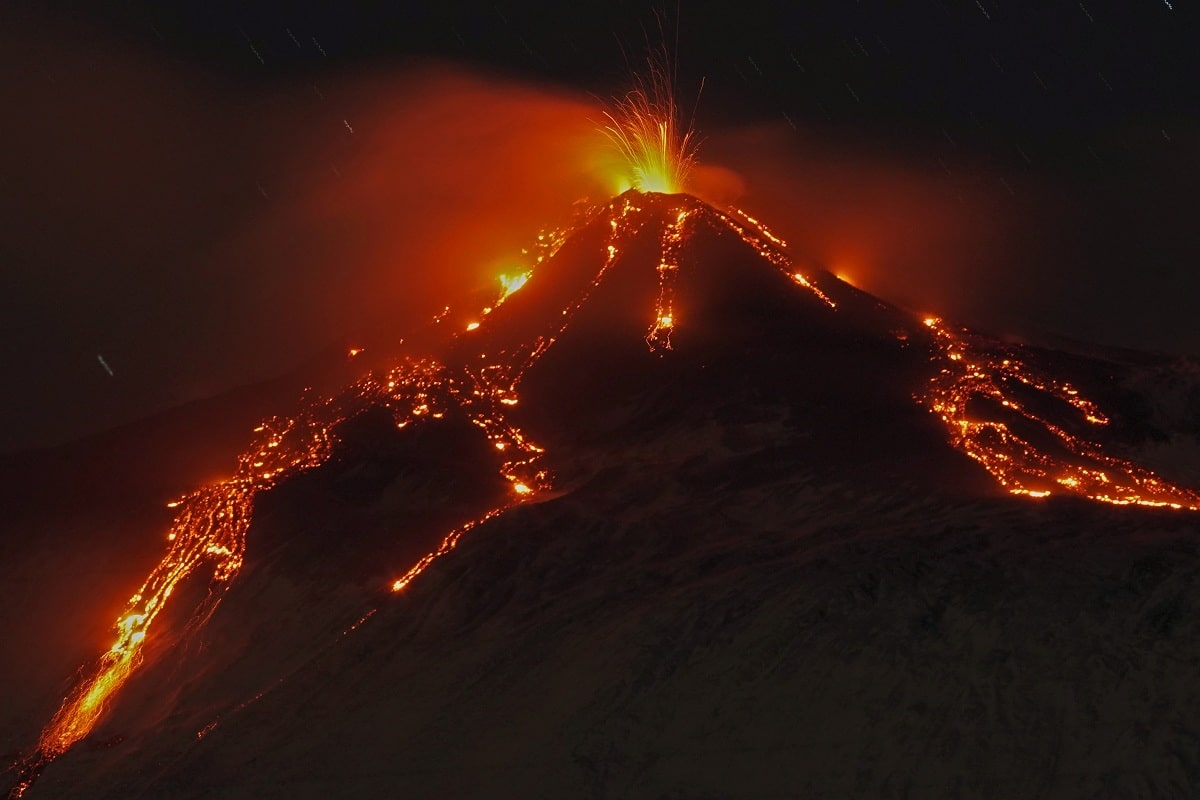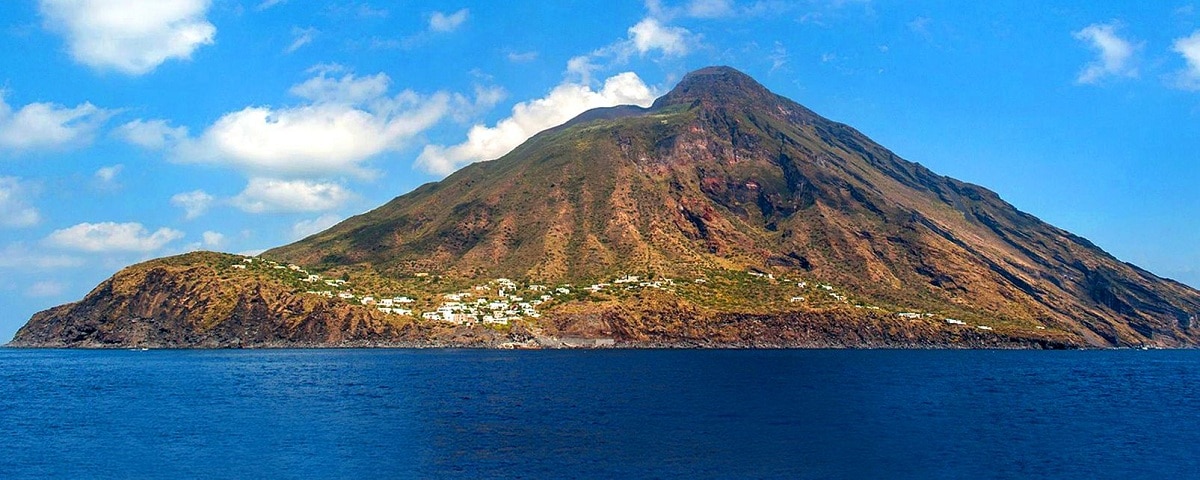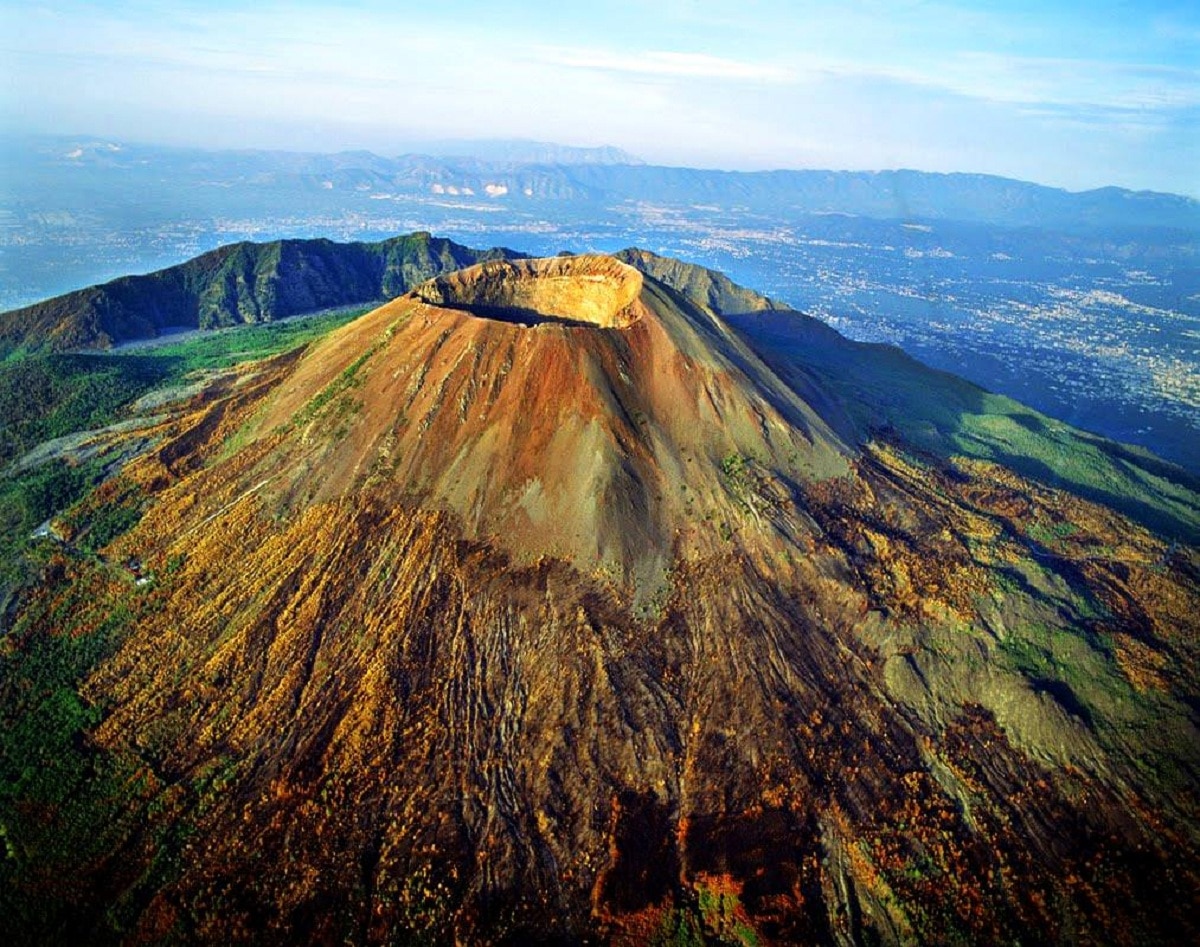
Even today, Italy is a country with volcanic activity. Although many people think that their volcanoes are extinct, they actually show their activity from time to time with more or less obvious manifestations. In fact, the word "volcano" doesn't just mean explosive eruptions and lava flows, it's usually an opening in the Earth's surface from which gas, lava, and other materials erupt. A volcano, defined as "extinct/extinct", does not have to exhibit any type of activity for thousands of years. There are different volcanoes in Italy both active and inactive.
For this reason, we are going to dedicate this article to telling you everything you need to know about the volcanoes in Italy, their characteristics and current status.
volcanoes in Italy

In Italy we find 3 main volcanoes which are the following:
Vesuvius – Naples/Campania
The volcano is the result of the collapse of an even larger volcano, reaching a height of 1.280 meters. It is located on the east coast of the Bay of Naples in the Campania region. It is famous for its terrible eruption in 79 AD Completely buried Pompeii and Herculaneum were discovered centuries later and today can be visited in all their special atmosphere.
Its last eruption occurred in 1944, but Vesuvius has always been under control as it is considered the most dangerous of the Italian volcanoes, and today more than 700.000 people live on its slopes, which are divided into 19 villages. Certain areas of Vesuvius can be visited, and there are several organized tours from Naples to visit it, we recommend that you ask at the tourist office for information about it.
Etna – Catania/Sicily
The volcano is located north of the city of Catania in the Sicily region; with 3000 meters, It is the largest in the world and one of the highest in Europe. Its last major eruption occurred in 2008, when it released a large amount of lava and ash (ash from another eruption in 2007 had already reached the city of Messina). The other major recent eruptions were the one that devastated the town of Piano Provenzana in 2002 and a nearby town in 1969. Their activity continued to a lesser extent as pyroclastic material was released.
Etna can be visited through various tours, mainly from the city of Catania, for more information we recommend asking at the tourist office.
Its geological features indicate that the Etna Volcano has been active since the end of the Neogene (ie, the last 2,6 million years). This volcano has more than one activity center. Several secondary cones form in the transverse cracks that extend from the center to the sides. The current structure of the mountain is the result of the activities of at least two major eruption centers.
At a distance of only about 200 kilometers, passing through the provinces of Messina, Catania and Siracusa, there are two different tectonic plates with very different types of rocks, from metamorphic rocks to igneous rocks and sediments, a subduction zone, many regional faults. Mount Etna, active volcanoes on the Aeolian Islands, and outcrops of ancient volcanic activity on the plateau of the Iblean Mountains.
Stromboli – Aeolian Islands/Sicily
Stromboli is one of the islands of the Aeolian Islands archipelago, in the Tyrrhenian Sea. This volcano is known to be always active, with continuous explosive manifestations, of material and ashes, and of lava.That is why it is known as one of the most active volcanoes in the world. Well known is the north-west side known as “Sciara del Fuoco”.
Smaller volcanoes in Italy

There are other volcanoes in Italy that, although they are smaller, are also important. Let's see what its characteristics are and what they are:
Campi Flegrei
This volcanic area is located in the northwest of Naples. Several craters have been discovered here, some of which have become lakes. Today, the area is characterized by secondary activities such as the export of natural gas, hot springs and "solfatara".
Ischia
This is a volcanic island in the Tyrrhenian Sea, facing the Gulf of Naples, it is the emerging part of a large underwater volcanic mountain. Nowadays, the island is always monitored by specific instruments and has secondary activities such as exhaust ducts and thermal activity: that is why Ischia is called an important thermal tourist destination, also thanks to its charming construction.
Lipari
The largest of the Aeolian Islands, its last major eruption occurred in 729 AD. C. by Mount Perato; they have outlets of pumice stone and obsidian, black glass. Although its activity is reduced to fumarole vents and hot springs, the volcano cannot be considered extinct.
Pantelleria
The island is located in the middle of the Mediterranean Sea, southwest of Sicily. Its last major eruption occurred on Mount Faustner in 1891. Today, the island is also characterized by the form of secondary volcanoes.
Alban hills
These hills are part of the volcanic activity in the Lazio region, southeast of Rome. Their last eruption occurred thousands of years ago, and they are believed to be a form of non-extinct volcanic activity.
Ferdinanda Island
This is the volcanic island that emerged after the 1831 eruption, it is located between Sicily and Pantelleria. The small island then flooded, surfacing the following year, and submerging again. Today, its peak is about 6 meters below sea level.
extinct or dormant volcanoes

Scholars consider active not only volcanoes with primary or secondary activity, but also those that can resume their previous activity.
Volcanoes that should not resume activity based on geological and physical searches are considered extinct. In this category is the Vulsini mountain range, whose main crater today is Lake Bolsena in the province of Viterbo (Lazio region).
The dormant volcanoes are Rocca Montfina, in the extreme northwest of the Campania region, and the islands of Procida and Vivara at the northwestern end of the Gulf of Naples.
I hope that with this information you can learn more about the volcanoes in Italy and their characteristics.